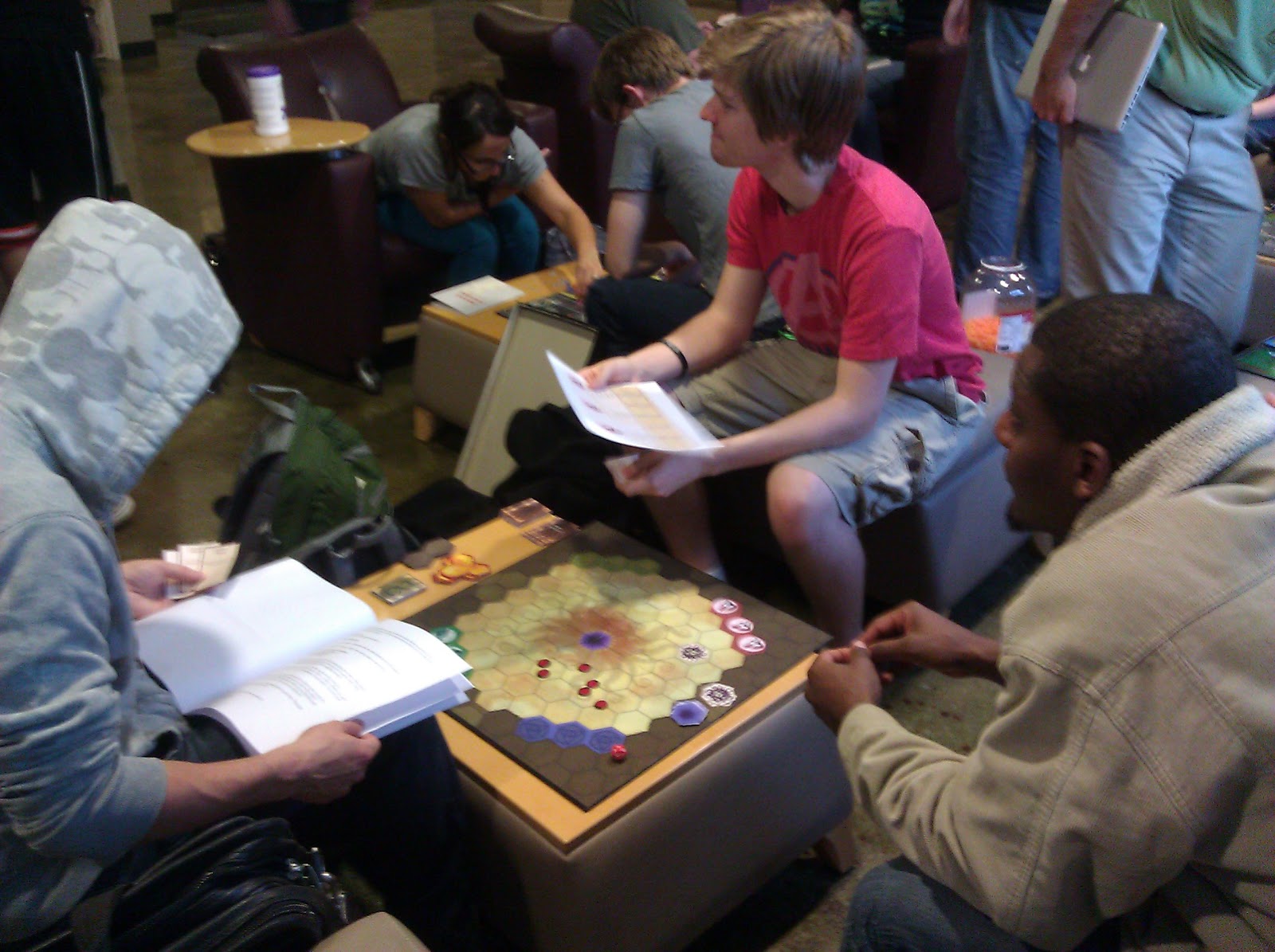As an introduction to our new project, we've begun to look into Print and Play games...
Maze(?):
It consists of multiple pieces that make up the board, with some blocks that are "locked" and some that are "sliding blocks". It's a 4 player game that allows for variety of strategic choices based on which of the 9 characters you choose, as well as all the available actions and differing terrain.
Setting up took a while; the rules were rather wordy but basically each player gets 2 Action Points (AP per turn. They don't carry over. Most actions (moving, picking up treasure, sliding blocks, etc) cost one AP, but each character has a "free" action, giving you a total of 3 possible moves per turn. The only thing that costs 2 AP points is using a Spell.
The game was started out slow in terms of fun...a whole game can be played without the modify the map. In actuality, however, sliding the blocks around is what makes the game really interesting. Everyone can also control the Dragon piece to sabotage other players and even steal their treasures. The game ends one all treasure is picked up.
RoboDerby: Express
A simplified version of
RoboRally. A 2-4 player game in which you play as a supercomputer programming robots out of boredom. We roll die in order to control the robots and get them through a maze made up of 4 board tiles.
Each player begins at a different marker and they have to race from an outside edge all around the board, with the requirement to touch each game tile in order. The direction in which this plays depends on your setup. Relatively easy to setup, since it deals with the board pieces and stickers. However, each player needs 6 die to play.
Alternatively, each player plays with 2 die, (one to represent the robot and one for actions) and you roll your action die for every row. We left markers on top of the "sticker" cards to keep track of our options (as though we were playing bingo). This was important in regards to the strategic part of the game due to the different "priority" of each action!
At any rate, each player has a programming card with various options:
Again due to our lack of die, we moved away our markers until we only had 4 moves and assigned the R values to a row. It was fun because it was a game of somewhat balanced luck and chaos due to your own strategy on robot movement-- plus sabotage from other players.
Some of the more interesting commands were the different Hacking methods (Comment "//" and Invert "!"), those can really mess people up at times. The Comment Hack cancels out an opponent's moves while the Invert Hack inverts another player's command (i.e. move back 3 spaces instead of forward)
Thoughts:
Both games were based on modular game tile set, which definitely added customization and variety to gameplay that I really enjoyed. The art for RoboDerby was really clean and stands out in comparison to Maze-- especially if you use the Tron-themed board tiles...
RoboDerby's 6 die per player requirement made it a little more difficult to play in terms of resources, but it made the game a lot of fun. I definitely liked the various options that these games had to offer in terms of available player actions and playing fields.










































